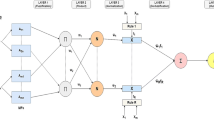Abstract
A three-dimensional finite element model of evaporative laser grooving process has been developed for ceramic materials. The laser is assumed to be a continuous wave and approximated as Gaussian beam. The model can predict three-dimensional temperature distribution inside the specimen as well as resultant groove depth. By comparing the predicted groove depths with experimental data from literature, it was found that the effect of multiple reflections in deep grooves is significant. The computational model can be calibrated for deep grooves by increasing absorptivity for deeper cuts. The calibrated model was used to develop a fuzzy expert system (FES) which can reliably predict groove depth at relatively low computational costs. Fuzzy logic (FL) methodology, on the other hand, is a capable modeling tool which performs extremely robust in a nonlinear complex field with least trial data. In the fuzzy expert system, the goodness of fit was found to be 0.991, and the mean relative error was 4.714 % compared to goodness of fit of 0.897 and mean relative error of 10.675 % in finite element method (FEM). FES could successfully increase the accuracy of FEM without taking the complex phenomena of multiple reflections into computation.
Similar content being viewed by others
References
Dubey AK, Yadava V (2008) Laser beam machining—a review. Int J Mach Tools Manuf 48(6):609–628
Meijer J (2004) Laser beam machining (LBM), state of the art and new opportunities. J Mater Process Technol 149(1):2–17
Kuar A, Doloi B, Bhattacharyya B (2006) Modelling and analysis of pulsed Nd: YAG laser machining characteristics during micro-drilling of zirconia (ZrO2). Int J Mach Tools Manuf 46(12):1301–1310
Samant AN, Dahotre NB (2009) Laser machining of structural ceramics—a review. J Eur Ceram Soc 29(6):969–993
Modest M, Abakians H (1986) Evaporative cutting of a semi-infinite body with a moving CW laser. J Heat Transf 108(3):602–607
Modest MF (1996) Three-dimensional, transient model for laser machining of ablating/decomposing materials. Int J Heat Mass Transf 39(2):221–234
Sheng PS, Joshi VS (1995) Analysis of heat-affected zone formation for laser cutting of stainless steel. J Mater Process Technol 53(3):879–892
Kim MJ (2005) 3D finite element analysis of evaporative laser cutting. Appl Math Model 29(10):938–954
Scintilla L, Tricarico L (2012) Estimating cutting front temperature difference in disk and CO2 laser beam fusion cutting. Opt Laser Technol 44(5):1468–1479
Yan Y, Ji L, Bao Y, Chen X, Jiang Y (2013) CO2 laser high-speed crack-free cutting of thick-section alumina based on close-piercing lapping technique. Int J Adv Manuf Technol 64(9–12):1611–1624
Arif AFM, Yilbas B (2008) Thermal stress developed during the laser cutting process: consideration of different materials. Int J Adv Manuf Technol 37(7–8):698–704. doi:10.1007/s00170-007-1020-1
Nyon KY, Nyeoh CY, Mokhtar M, Abdul-Rahman R (2012) Finite element analysis of laser inert gas cutting on Inconel 718. Int J Adv Manuf Technol 60(9–12):995–1007. doi:10.1007/s00170-011-3655-1
Liu P, Liu H, Zhang Y (2014) A new thin sheet heat source model for active gas melt laser cutting. Int J Adv Manuf Technol 1–7. doi:10.1007/s00170-014-6478-z
Pandey A, Dubey A (2013) Multiple quality optimization in laser cutting of difficult-to-laser-cut material using grey–fuzzy methodology. Int J Adv Manuf Technol 65(1–4):421–431. doi:10.1007/s00170-012-4181-5
Yajun J, Zhenliang L, Minghui L (2006) Application of fuzzy and rough sets theory in the optimization of machining parameters for mold milling operations. Int J Adv Manuf Technol 28(11–12):1071–1077. doi:10.1007/s00170-004-2472-1
Pandey AK, Dubey AK (2013) Fuzzy expert system for prediction of kerf qualities in pulsed laser cutting of titanium alloy sheet. Mach Sci Technol 17(4):545–574
Pandey AK, Dubey AK (2012) Taguchi based fuzzy logic optimization of multiple quality characteristics in laser cutting of Duralumin sheet. Opt Lasers Eng 50(3):328–335
Syn CZ, Mokhtar M, Feng CJ, Manurung YH (2011) Approach to prediction of laser cutting quality by employing fuzzy expert system. Expert Syst Appl 38(6):7558–7568
Quek S, Liu G (2003) Finite element method: a practical course. Butterworth-Heinemann, Kidlington, Oxford
George K, Bo Y (2008) Fuzzy sets and fuzzy logic, theory and applications. Prentice Hall P T R, New Jersey
Rajasekaran S, Pai GV (2003) Neural networks, fuzzy logic and genetic algorithm: synthesis and applications (with cd). Prentice-Hall of India Private Limited, New Delhi
Roy S, Modest MF (1993) CW laser machining of hard ceramics—I. Effects of three-dimensional conduction, variable properties and various laser parameters. Int J Heat Mass Transf 36(14):3515–3528
Bang SY, Roy S, Modest MF (1993) CW laser machining of hard ceramics—II. Effects of multiple reflections. Int J Heat Mass Transf 36(14):3529–3540. doi:10.1016/0017-9310(93)90170-B
Khennane A (2013) Introduction to finite element analysis using MATLAB® and abaqus. CRC Press, Boca Raton, Florida
Author information
Authors and Affiliations
Corresponding author
Rights and permissions
About this article
Cite this article
Parandoush, P., Hossain, A. & Yusoff, N. Numerical and intelligent analysis of silicon nitride laser grooving. Int J Adv Manuf Technol 79, 1849–1859 (2015). https://doi.org/10.1007/s00170-015-6957-x
Received:
Accepted:
Published:
Issue Date:
DOI: https://doi.org/10.1007/s00170-015-6957-x




